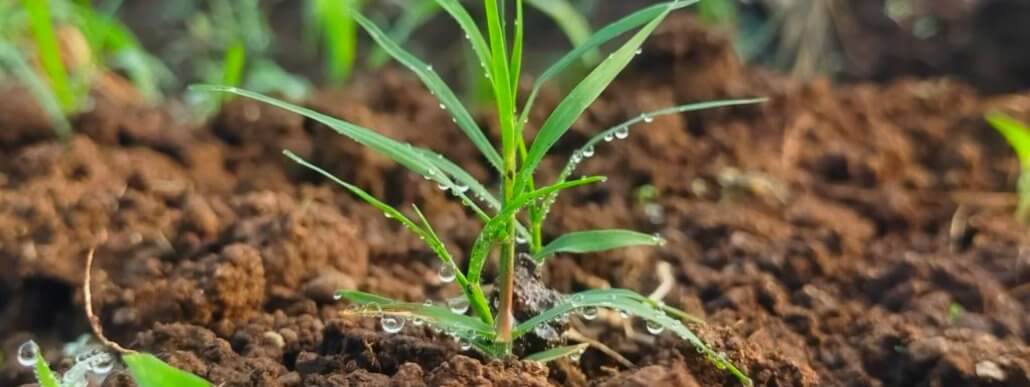Soil water movement is an important process in the soil. It does not only satisfy the plants water needs, but it also feeds the plant nutrients. Plants are only able to absorb nutrients via the soil solution, without water, the plant is both thirsty and hungry. Farmers must understand the dynamics of water movement for better irrigation and nutrient management. In this article, I will be discussing how movement of water is facilitated in the soil.
What influences the movement of water?
Soil texture
Water movement in the soil is strongly influenced by the soil particle size (texture) as well as structure and pore size. Soil texture is the relative amount of sand, silt, and clay-sized particles. Sand particles are the largest, silt is intermediate, and clay is the smallest. Water moves more quickly through the large open macropores found on sandy soils than the smaller pores of silt or much smaller micropores in dense clay soils.
Soil structure
Soil structure is the arrangement of soil particles into steady units called aggregates, which give soil its structure. The stability and arrangement of these aggregates are heavily influenced by the amount of carbon and microbial activity there is in the soil (Read the blog: Soil aggregates: the armour in your soil). Soil aggregates that are arranged in a granular structure allow for water to move and be absorbed quickly downward in the soil. On the other hand, soils with platy/flat structure force a longer indirect path downward. It is important that farmers understand the structure of their soil so that they can decide on best irrigation methods that will be most efficient for each field.
Water flow
Water is nearly always moving in the soil and it can be in any direction simultaneously. Gravity is the dominant force that moves water downward while capillary action is the major force for movement of water in any direction i.e., upward, and lateral water movement. Gravity is the primary water moving force in saturated soils (total capacity), while capillary action is the primary force in unsaturated soils (field capacity).
Gravitational water movement is greatest in soils with large pores i.e., macropores and mesopores. This is because high percolation pressure at saturation forces large quantities of water to move through the soil rapidly. As a result, water will move via soil pores that are easily accessible and can move water in large quantities. Soil’s with smaller pores (micropores) move water via capillary action and that is where most if not all water at field capacity is held.
Important to remember that movement of water is always with nutrients, therefore rapid water movement through the soil takes nutrients along.
Implications of water flow based on soil texture
Water movement in sandy soil is mostly through gravitational water movement because of their large pore spaces and thus water irrigated on such soils is lost more rapidly compared to clayey soils. This challenge is buffered in soils with high carbon levels. This is because carbon helps create strong micro aggregates and thus many micropores. These micropores also enhance capillary action and increased amounts of water that can be held at field capacity. Without carbon, sandy soils will have high water loss to below the root zone and poor storage capacity.
Clayey soils on the other hand have many micropores created by the arrangement of their small particles. This means that the rate of water percolation is much slower in these soils, therefore irrigation amounts in these soils need to be monitored closely so as not to clog the soil. Although clayey soils will hold more water than sand, the accessibility of the water to the plant is limited due to clay’s ability to hold on more firmly. The solution to this is carbon. Carbon acts as an intermediary between clay particle pores and plant roots. It can absorb water held firmly by clay particles and then release it to the plant.
Take away points
Irrigation should not be applied uniformly in fields because soil differs in structure and texture. Understanding water movement dynamics for individual fields are very important for irrigation scheduling. Soil carbon plays a crucial role in buffering the challenges presented by each soil type and therefore building carbon is crucial for water management.
Sources
Soil Water Measurement and Movement
Importance of soil-water relations in assessing the endpoint of bioremediated soils
- The management of soils with excessive sodium and magnesium levels - 2023-06-12
- Understanding evapotranspiration better - 2021-10-18
- Soil fungi connections - 2021-09-28

